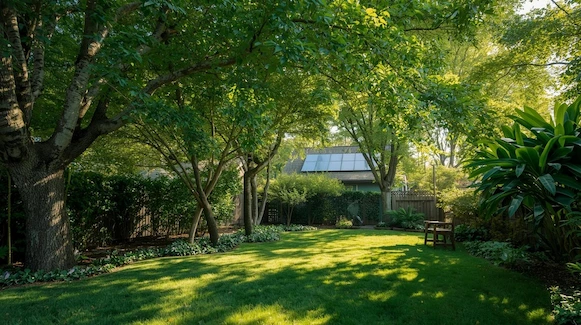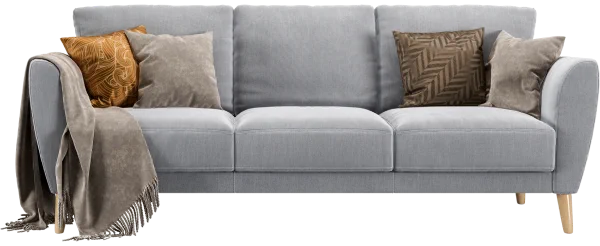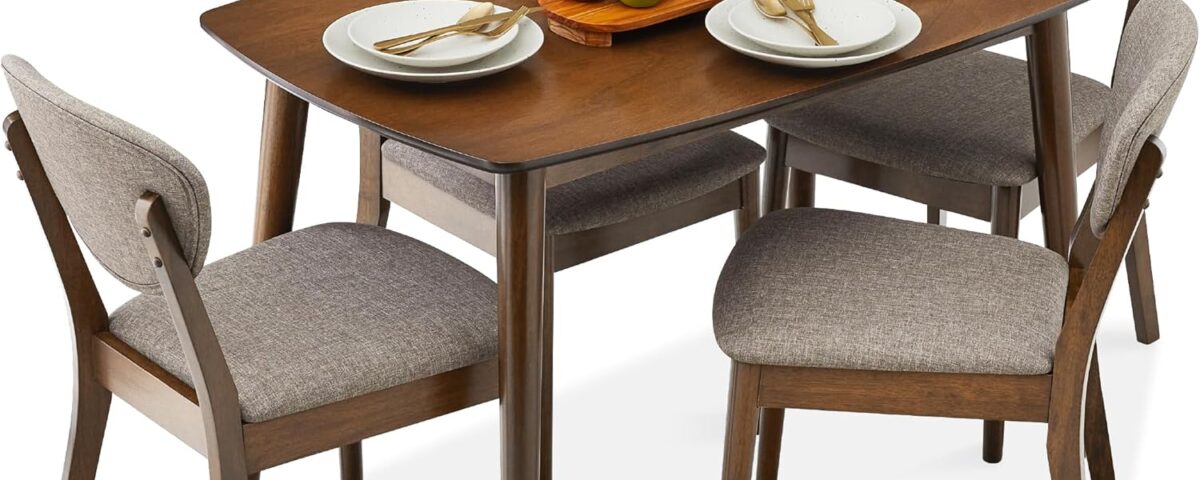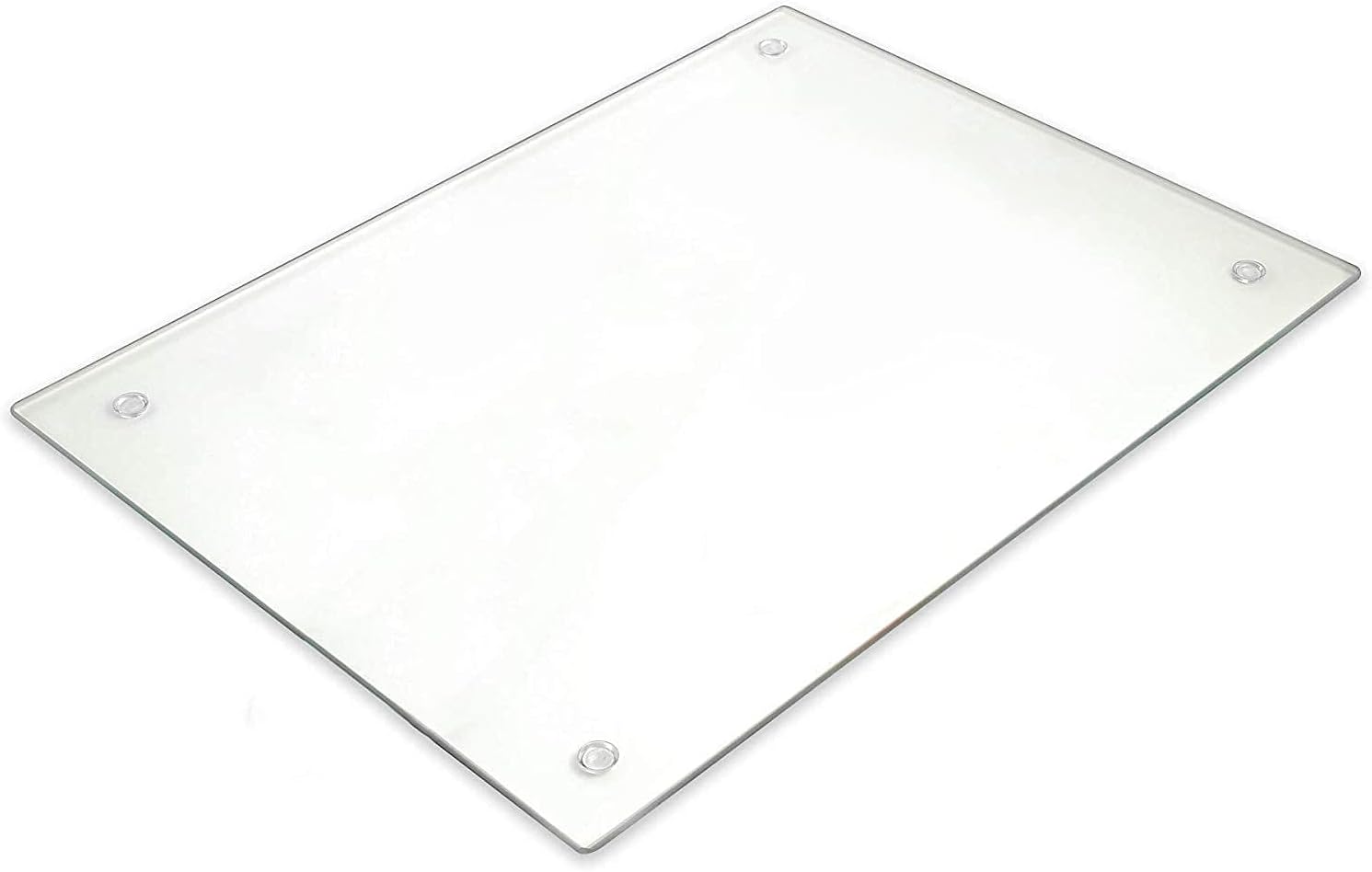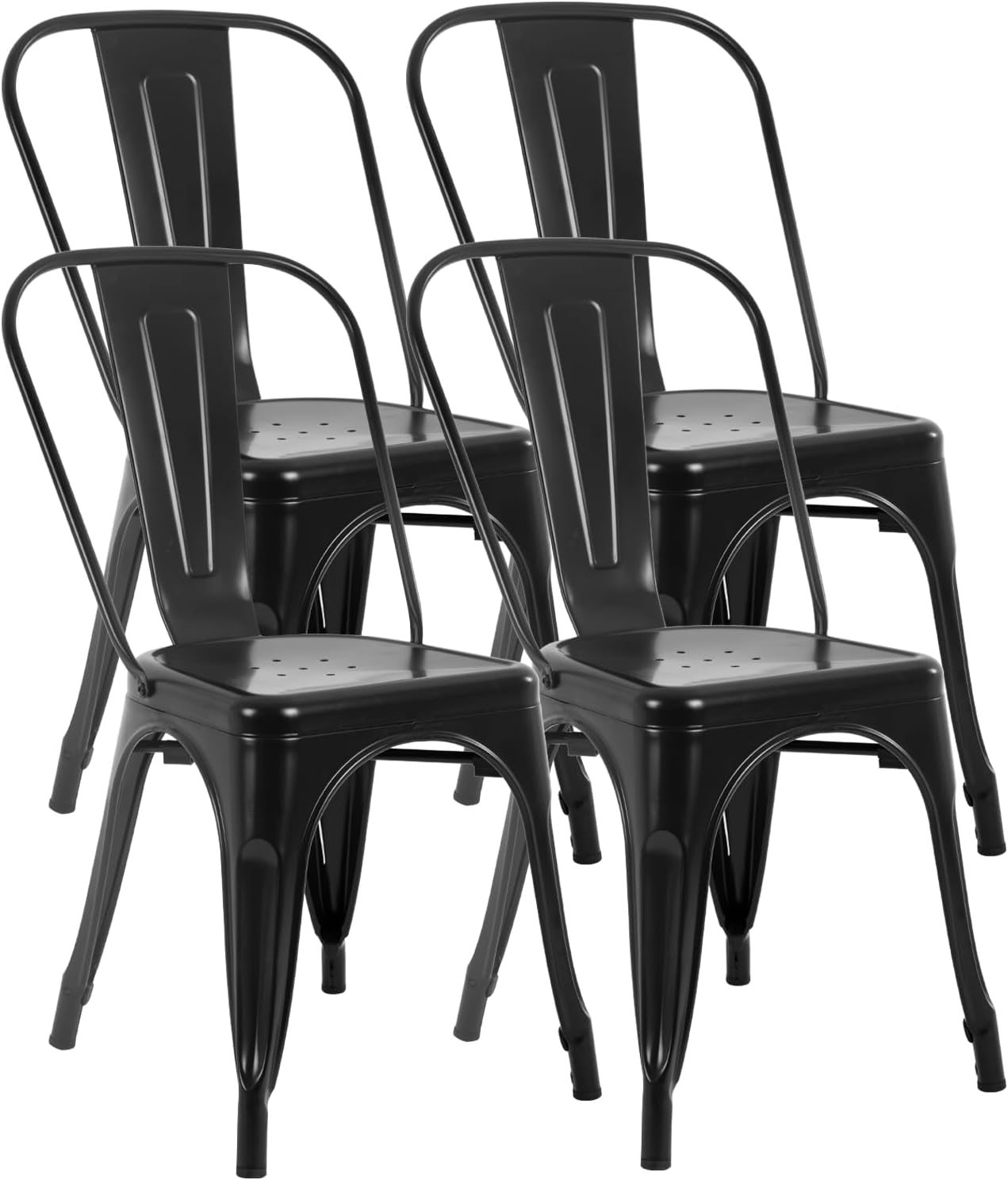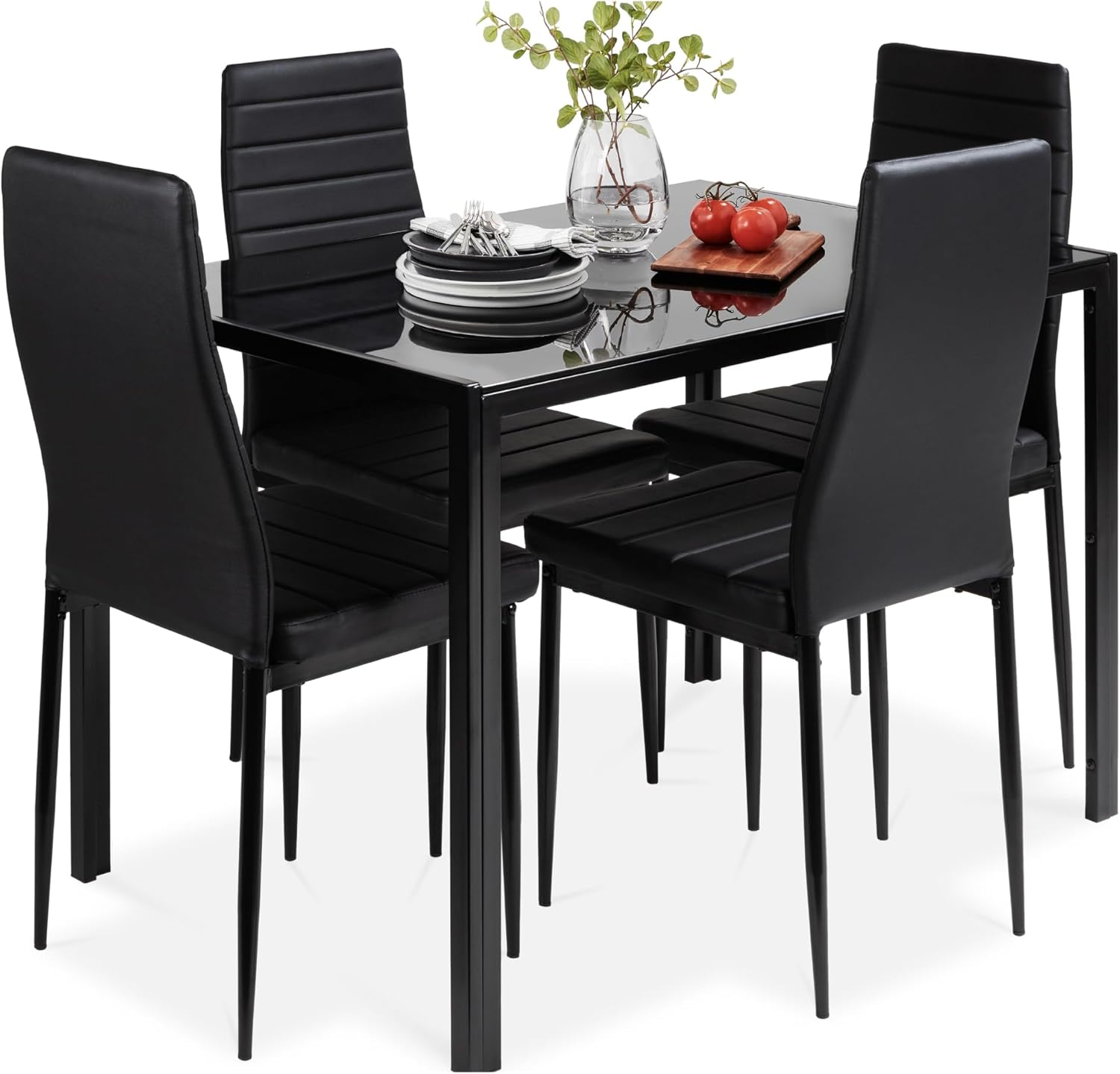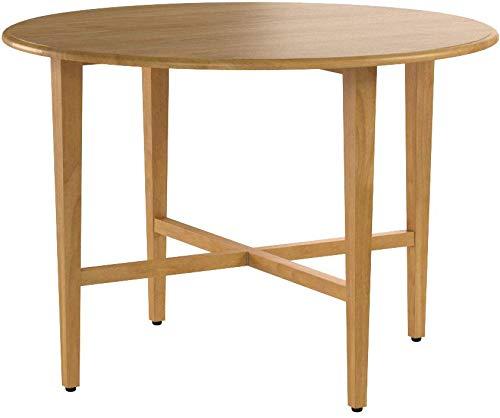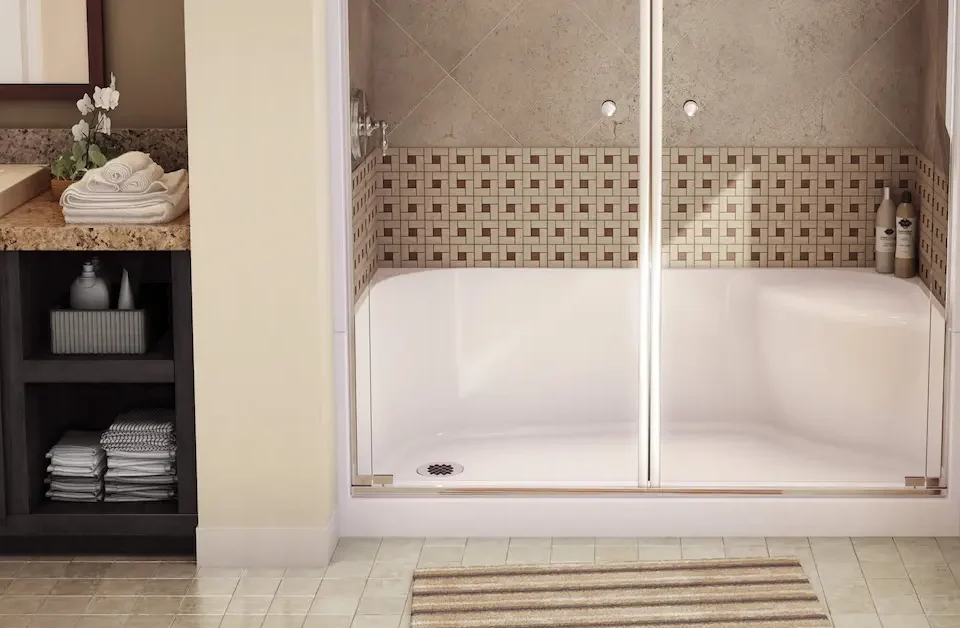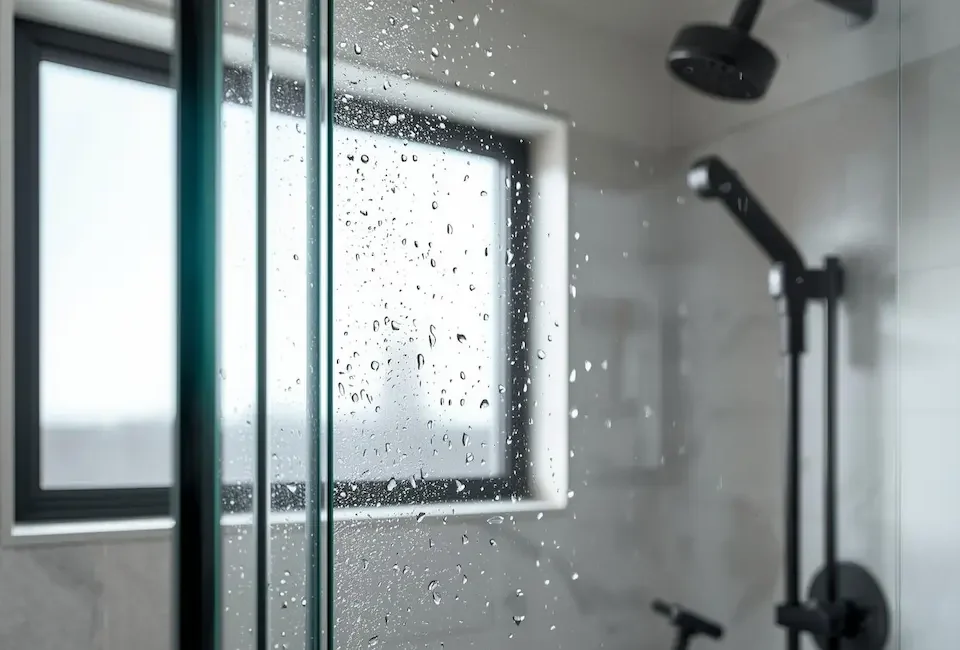
The Trillion Tree Truth How Many Trees Exist and Why It Matters
October 13, 2025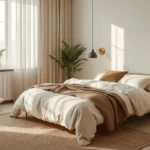
2025 Bedroom Trends Your Guide to a Modern, Stylish Sanctuary
October 17, 2025Choosing the right dining table isn’t just about buying a piece of furniture; it’s about creating the heart of your home. It’s where conversations flow, laughter fills the air, and everyday moments turn into lasting memories. But with so many shapes, materials, and styles to choose from, the process can quickly feel overwhelming. One wrong decision can leave you second-guessing your choice long after it’s in your dining room.
Maybe you’re having trouble picturing how a table will look in your space. Or you’re unsure which material can handle the wear and tear of daily life. Perhaps you’re working within a budget but still want something that feels stylish and built to last. If any of this sounds familiar, this guide is for you.
Here, you’ll find practical advice and expert insights to simplify your search. By the time you’re done reading, you’ll know exactly what to look for, so you can choose not just any dining table, but the one that complements your lifestyle, reflects your taste, and brings your home together beautifully.
Understanding Your Space: Essential Measurements & Layout Planning
Choosing a dining table that looks good is only half the battle. The real challenge is finding one that fits perfectly into your space and lifestyle. Before falling in love with a design, it’s important to make sure it works with the size and flow of your dining area. Proper measurements and smart layout planning are what separate a satisfying purchase from a regretful one.
Why Accurate Measurement Matters
A beautiful table can quickly become a source of frustration if it’s too large, too small, or makes movement awkward. Taking the time to measure upfront prevents that stress and ensures your dining area feels balanced and comfortable. Here’s why accuracy is key:
- Simplifies your choices: Knowing your dimensions helps narrow down the endless options and keeps your search focused.
- Improves functionality: The right size allows everyone to move freely without bumping chairs or feeling crowded.
- Keeps the room flowing: Adequate clearance around the table ensures smooth traffic paths, especially in open-plan layouts.
- Prevents delivery headaches: Measuring doorways, hallways, and staircases avoids the costly surprise of a table that won’t fit through.
Key Measurements to Take
Before shopping, grab a tape measure and note down a few essentials:
- Room dimensions: Measure the full length and width of your dining space.
- Doorways and hallways: Check every access point to confirm the table can be delivered easily.
- Expert Tip: Always measure both your dining area and delivery paths. It’s one of the most common mistakes people overlook, and one of the costliest.
- Expert Tip: Always measure both your dining area and delivery paths. It’s one of the most common mistakes people overlook, and one of the costliest.
- Existing furniture: If you have a sideboard, buffet, or console table, factor in its size and placement.
- Fixture placement: Consider the position of windows, radiators, and power outlets. They can affect where you center your table or hang lighting.
Recommended Room Clearances and Chair Space
Comfortable spacing is essential for a dining area that feels welcoming and easy to navigate. Here are the general minimums to guide your planning:
|
Table Shape |
Minimum Room Size |
Recommended Chair Clearance |
|
Rectangular |
At least 10x12 ft (3x3.6 m) |
36–48 in (90–120 cm) from wall or furniture to table edge |
|
Round |
At least 10x10 ft (3x3 m) |
36–48 in (90–120 cm) from wall or furniture to table edge |
|
Square |
At least 9x9 ft (2.7x2.7 m) |
36–48 in (90–120 cm) from wall or furniture to table edge |
|
Oval |
Similar to rectangular |
36–48 in (90–120 cm) from wall or furniture to table edge |
Visualizing Traffic Flow and Ergonomics
Once you’ve measured your dining area, it’s time to think about how people will actually move and sit within it. A dining table isn’t meant to dominate a room; it should invite conversation, movement, and comfort. This is where traffic flow and ergonomics come into play. Proper spacing ensures your dining area feels open and functional, not cluttered or cramped.
Clear Pathways for Easy Movement
A well-planned dining layout allows everyone to move freely, even when the table is full.
Aim for at least 36 to 48 inches of space between the table edge and nearby walls or furniture. This clearance gives guests enough room to walk around the table, pull out chairs, and navigate the space without feeling boxed in.
Expert Tip: For smaller dining rooms, prioritize at least 24 to 30 inches of clearance so chairs can be pulled out comfortably. Even a few extra inches can make a noticeable difference in flow and comfort.
Understanding Ergonomic Seating
Beyond walking space, ergonomics play a big role in how enjoyable mealtimes feel. Every diner should have enough elbow room and personal space to eat comfortably without bumping into others. The general guideline is 24 to 30 inches of table width per person.
Here’s how that breaks down:
- 24 inches per person: Ideal for tighter seating or casual dining setups.
- 30 inches per person: Best for formal settings or larger chairs, offering more personal space.
These recommendations are backed by interior design and ergonomic studies, such as the standards from the National Kitchen and Bath Association (NKBA) and BIFMA (Business and Institutional Furniture Manufacturers Association), which emphasize comfort and accessibility in residential layouts.
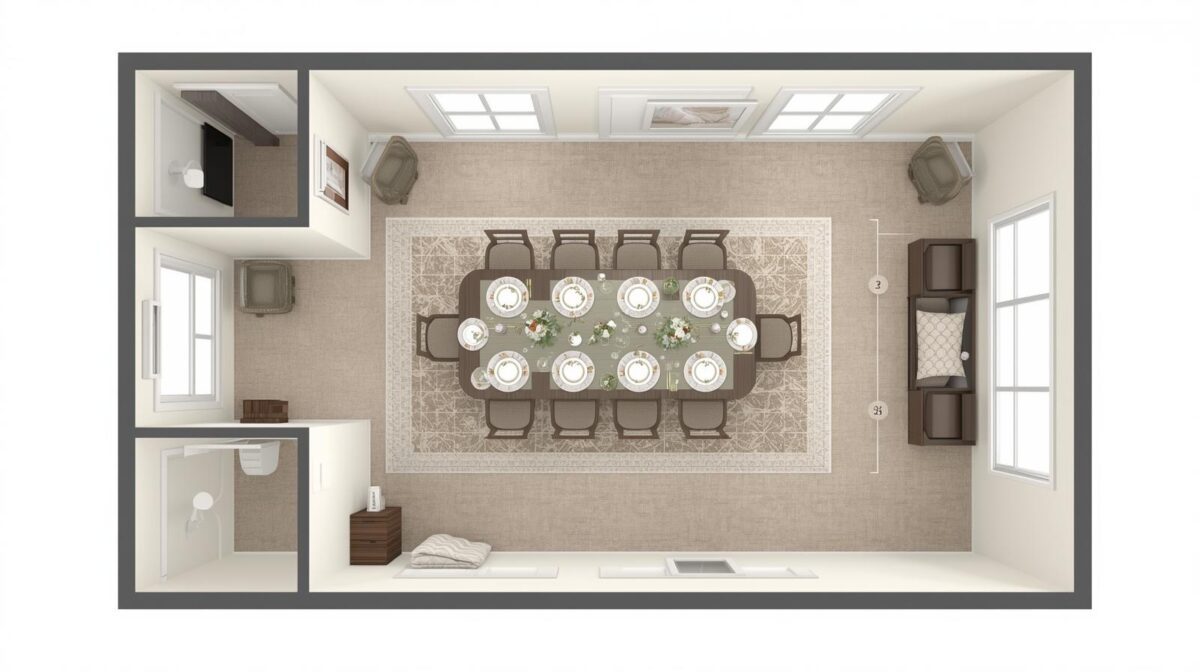
Credit to Homes and Looms
Choosing the Perfect Dining Table Shape
The shape of your dining table affects much more than how it looks; it influences how people interact, how space feels, and how well the table functions day to day. The right shape balances aesthetics with practicality, helping your dining area feel both comfortable and cohesive. Let’s explore the key shapes, their advantages, and what type of room or lifestyle each best suits.
Rectangular Tables: The Classic Choice
Rectangular tables are by far the most common and versatile option. They naturally fit the proportions of most dining rooms and provide ample seating and surface area.
- Advantages: Great for larger gatherings, fits long or narrow rooms, and provides plenty of space for serving dishes or décor.
- Disadvantages: Can feel a bit formal, and sharp corners may make movement tricky in tighter spaces.
- Ideal for: Large families, frequent hosts, and traditional or open dining layouts.
A 60-inch rectangular table typically seats 6 people, while an 84–96-inch version can comfortably seat 8 to 10.
Round Tables: Fostering Intimacy and Conversation
Round tables create a relaxed, social dining atmosphere where everyone can see and talk to each other easily. They work particularly well in square or small rooms.
- Advantages: Encourages conversation, eliminates sharp corners (making it safer for kids), and adds a softer visual element.
- Disadvantages: Offers less surface space for serving and may feel awkward in very narrow rooms.
- Ideal for: Compact dining areas, apartments, or spaces designed for casual, intimate meals.
A 42-inch round table typically seats 4 people, while a 60-inch round table can seat 6 comfortably.
Square Tables: Best for Smaller Groups and Spaces
Square tables offer a clean, balanced aesthetic that feels modern and cozy. They’re ideal for small families or dining nooks where space is limited.
- Advantages: Perfectly complements a square-shaped room, fosters a sense of equality among diners, and feels intimate for groups of four.
- Disadvantages: Limited capacity, adding more guests can disrupt symmetry and crowd the table.
- Ideal for: Breakfast corners, small dining rooms, or casual dining spaces.
A 36–48-inch square table generally accommodates 4 people comfortably.
Oval Tables: Blending Form and Function
Oval tables combine the best of both worlds: the functionality of a rectangular table with the gentle curves of a round one. Their soft edges help maintain flow in tighter rooms.
- Advantages: Seats more people than a round table of similar width, offers no sharp corners, and softens the room’s overall feel.
- Disadvantages: Some styles can be less stable due to their elongated shape, and finding table linens or coverings can be trickier.
- Ideal for: Long rooms where you want a welcoming, less formal look, or smaller rectangular spaces that need smoother lines.
A 72-inch oval table typically seats 6 people, while an 84-inch version can fit 8.
Table Shape Comparison: Quick Reference
|
Shape |
Best For |
Pros |
Cons |
Typical Seating Capacity |
|
Rectangular |
Large families, narrow rooms |
Maximizes seating, fits most layouts |
Can feel formal, sharp corners |
6–10 people (60–96 in) |
|
Round |
Small spaces, conversation-friendly layouts |
Promotes connection, no sharp edges |
Limited surface area |
4–6 people (42–60 in) |
|
Square |
Compact or square rooms |
Balanced look, intimate setting |
Limited flexibility, small capacity |
4 people (36–48 in) |
|
Oval |
Medium to long rooms |
Smooth flow, seats more than round |
Harder to accessorize |
6–8 people (60–84 in) |
When choosing a shape, visualize not only how the table fits the room but also how it fits your lifestyle. Do you host big dinners or prefer cozy meals with family? Do you want something formal or casual? The right shape should reflect both the function and feel of your home.
Decoding Dining Table Materials: Durability, Aesthetics & Care
The material of your dining table shapes not just its look, but how it lives with you over time. From family breakfasts to dinner parties, your table faces daily wear, spills, and the occasional bump. Choosing the right material means balancing beauty, strength, and maintenance in a way that suits your lifestyle.
Below, we’ll explore the most common dining table materials, their advantages, challenges, and what to expect from each.
Solid Wood: Timeless Beauty and Longevity
Solid hardwood tables are the gold standard for quality and endurance. Each piece carries its own grain pattern and warmth, making every table unique.
- Characteristics: Rich natural grain, solid build, and warm texture.
- Popular Choices: Oak, Walnut, Teak, Maple, and Cherry are the most reliable hardwoods for dining tables.
- Durability: Excellent. With proper care, hardwood tables can last for decades, even generations, and can often be refinished to restore their surface.
- Maintenance: Keep away from direct heat and moisture. Use placemats, and condition the surface occasionally to maintain the finish.
- Aesthetic: Works across a wide range of styles, from traditional to Scandinavian minimalism.
Expert Tip: If your budget allows, invest in a solid hardwood table. It offers unmatched longevity and can be refinished multiple times to look new again.
Data-backed note: According to the Janka Hardness Scale, hardwoods like Oak and Maple rank between 1,200–1,400 lbf, indicating excellent resistance to dents and scratches compared to softwoods.
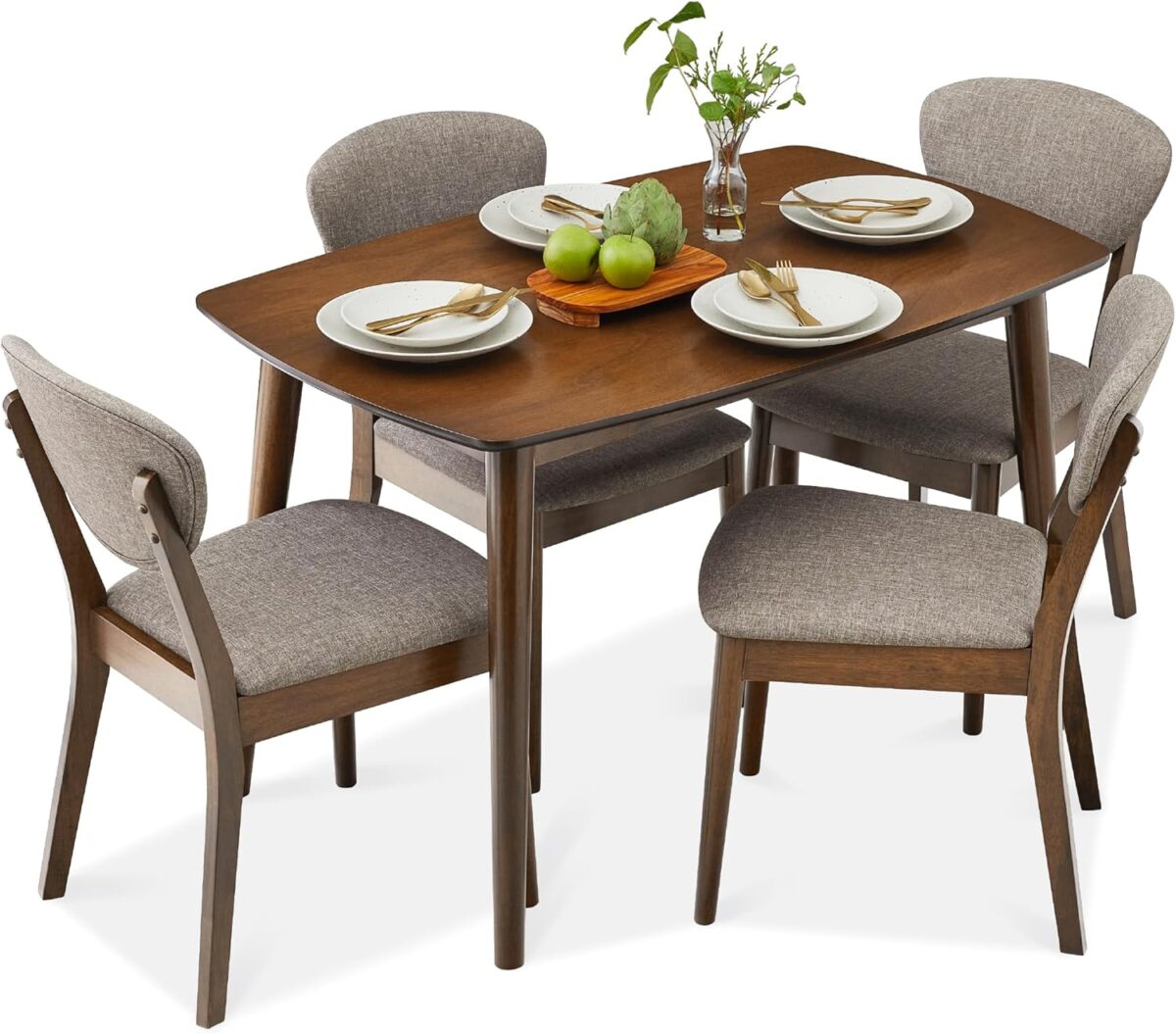
Best Choice Products 5-Piece Dining Set, Compact Mid-Century Modern Table & Chair Set for Home, Apartment w/ 4 Chairs, Padded Seats & Backrests, Wooden Frame - Walnut/Light Gray
Product Description
Best Choice Products Mid-Century Modern Dining Set – Style, Comfort & Functionality
Add timeless elegance to your dining space with this Mid-Century Modern Dining Set from Best Choice Products. Featuring a sleek rectangular wood-grain table and padded linen chairs, it comfortably seats up to four perfect for family meals or gatherings with friends.
Crafted with solid rubber wood legs and soft foam cushions, each piece offers lasting comfort and stability. The curved table corners and clean lines bring a modern yet cozy feel to any home décor.
Designed for small spaces, the chairs tuck neatly under the table to save room when not in use. Available in Walnut/Light Gray, Walnut/Charcoal, and Walnut/Cream finishes to match your style.
Key Details:
• Table: 47.25"L × 29.5"W × 29.5"H | Weight: 44 lbs
• Chair Capacity: 275 lbs | Table Capacity: 250 lbs
• Options: Table + 4 Chairs / Table + 2 Chairs + Bench / Table + 2 Benches
• Materials: Solid Rubber wood, Padded Linen
Veneer and Engineered Wood: Cost-Effective Style
Veneer and engineered wood tables deliver the appearance of solid wood at a lower price point. They’re made by bonding a thin layer of real wood over an engineered core such as MDF or plywood.
- Characteristics: Smooth surface and uniform appearance.
- Durability: Stable and resistant to warping; however, the veneer layer can chip or peel with impact.
- Maintenance: Low. Wipe clean with a soft cloth and avoid harsh cleaners.
- Aesthetic: Mimics the look of real wood with consistent color and texture.
This option is ideal for style-conscious buyers seeking affordability without compromising visual warmth.
Glass: Modern Elegance and Openness
Glass dining tables create a sense of light and space, perfect for smaller or modern interiors.
- Characteristics: Transparent surface adds airiness and reflects natural light.
- Product Recommendation: Choose tempered glass, which is four to five times stronger than regular glass and designed to break safely if damaged.
- Durability: Strong but can chip or scratch, especially around the edges.
- Maintenance: Easy to clean but shows fingerprints and smudges easily.
- Aesthetic: Complements minimalist, industrial, and contemporary settings.
Expert Tip: Glass tables are best for smaller dining rooms or apartments where you want to maintain a light, open feel.
Metal: Industrial Edge and Strength
Metal tables, or those with metal bases, bring strength and a sleek, modern touch to any room.
- Characteristics: Common materials include steel, cast iron, and aluminum, each offering durability and a clean aesthetic.
- Durability: Excellent. Resistant to scratches, dents, and general wear. Powder-coated or stainless finishes add rust resistance.
- Maintenance: Simple, just wipe clean. Check periodically for rust if the table is exposed to humidity.
- Aesthetic: Ideal for industrial, urban, or modern interiors.
Metal pairs beautifully with glass or wood tops, adding both visual contrast and structural stability.
Stone (Marble, Granite, Quartz): Luxurious and Durable
Stone tables bring an upscale, timeless feel to dining spaces. Each piece is distinct, with natural veining and texture.
- Characteristics: Naturally cool surface, luxurious appearance.
- Durability: Very strong and heat-resistant, though performance varies by type:
- Granite: Highly durable and resistant to scratches and heat.
- Quartz: Engineered stone that’s non-porous and virtually maintenance-free.
- Marble: Elegant but porous, more prone to staining and etching.
- Granite: Highly durable and resistant to scratches and heat.
- Maintenance: Seal marble regularly to prevent stains, wipe spills quickly, and avoid acidic cleaners.
- Aesthetic: Works beautifully in both classic and modern interiors, adding an instant sense of refinement.
Expert Tip: Families with young children or heavy use should lean toward quartz or sealed granite, which are easier to maintain than marble.
Laminate: Practicality and Variety
Laminate tables are built for real life. They combine affordability with exceptional resistance to everyday messes.
- Characteristics: Made of a printed design layer sealed with a protective resin over a sturdy core.
- Durability: Very good. Resistant to scratches, stains, and heat.
- Maintenance: Extremely low, just wipe with a damp cloth.
- Aesthetic: Available in endless colors and textures, often imitating wood or stone at a fraction of the price.
Expert Tip: For busy households or families with children, high-quality laminate is one of the most practical and durable options.
Tempered Glass Cutting Board Long Lasting Clear Glass Scratch Resistant, Heat Resistant, Shatter Resistant, Dishwasher Safe. (Large 12x16)
Upgrade your kitchen prep with this large tempered glass cutting board, designed for both style and durability. Measuring 12” x 16”, it provides a spacious, hygienic surface that resists stains, odors, and knife marks perfect for everyday use.
The nonporous glass surface is easy to clean and 100% dishwasher safe, while non-slip rubber feet keep it steady and secure during meal prep. Beyond chopping, it doubles as a serving tray, cheese board, or heat-resistant trivet, adding versatility to your counter top.
Key Features:
-
Break-resistant tempered glass construction for long-lasting use
-
Rubber feet prevent slipping and protect countertops
-
Hygienic, odor- and stain-resistant surface
-
Dishwasher safe for effortless cleanup
-
Multi-use: ideal as a cutting board, trivet, or serving plate
FDW Metal Dining Chairs Set of 4 Black | Stackable Tolix Side Chairs with Backrest Indoor/Outdoor Use 330 lbs Capacity for Kitchen & Restaurant
Bring style, comfort, and durability to any space with these premium metal dining chairs a perfect blend of industrial design and everyday functionality. Crafted from lightweight yet sturdy metal, they’re ideal for both indoor and outdoor use, from your dining room to the patio.
Each chair features non-slip rubber feet to protect your floors and prevent sliding, while the rust- and scratch-resistant coating ensures long-lasting beauty, even with daily use. The ergonomic backrest offers comfortable support and can be easily detached for compact stacking and storage. Best of all, these chairs arrive fully assembled simply unbox and enjoy instant, stylish seating.
Key Features:
-
Durable metal construction with sleek industrial design
-
Rust- and scratch-resistant finish for easy maintenance
-
Non-slip rubber feet protect floors and prevent movement
-
Detachable ergonomic backrest for comfort or easy storage
-
Ready to use & stackable — perfect for homes, cafes, patios, or offices
Best Choice Products 5-Piece Glass Dining Set, Modern Kitchen Table Furniture for Dining Room
Bring sleek, modern style to your dining space with this 5-piece glass dining set, designed for both elegance and everyday comfort. The set features a rectangular glass-top table and four padded faux leather chairs with curved backrests combining sophistication, durability, and ergonomic design in one.
Built with a sturdy powder-coated steel frame, this dining set offers lasting quality, while the water-resistant glass surface makes cleanup effortless simply wipe spills in seconds. Perfect for cozy kitchens, apartments, or dining nooks, the space-saving design allows the chairs to tuck neatly under the table when not in use.
Key Highlights:
-
Elegant glass tabletop adds a modern, refined touch
-
Durable steel frame and faux leather chairs ensure long-lasting use
-
Curved backrests provide supportive, comfortable seating
-
Water-resistant surface allows quick and easy cleaning
-
Compact, space-saving design perfect for small homes or studios
Dimensions:
-
Table: 47"(L) x 27.5"(W) x 29.25"(H) Capacity: 80 lbs
-
Chairs: 16.75"(L) x 16.75"(W) x 38"(H) —Capacity: 250 lbs each
Material Comparison: Durability, Maintenance & Aesthetic
|
Material |
Durability |
Maintenance |
Aesthetic |
Price Range |
|
Solid Wood (Hardwood) |
Excellent; refinishable and long-lasting |
Moderate (protect from heat/moisture) |
Warm, natural, timeless |
$130–$160 |
|
Veneer/Engineered Wood |
Good, stable, but the veneer can chip |
Low (simple cleaning) |
Mimics real wood |
$100–$150 |
|
Glass (Tempered) |
Good; heat-resistant, scratch-prone |
High (frequent cleaning) |
Modern, airy |
$50–$100 |
|
Metal |
Excellent; highly resistant |
Low (wipe clean, rust check) |
Industrial, sleek |
$170–$200 |
|
Stone (Marble/Granite/Quartz) |
Excellent; varies by type |
Moderate (sealing, quick cleanup) |
Luxurious, unique |
$110–$175 |
|
Laminate |
Very good; highly resistant |
Very low (easy wipe clean) |
Versatile, cost-effective |
$120–$190 |
Exploring Dining Table Styles: Matching Your Home’s Aesthetic
Your dining table does more than hold meals; it anchors your space, setting the tone for how the room feels and functions. Whether your style leans modern and sleek or rustic and cozy, understanding the main design directions helps you choose a table that complements your home instead of clashing with it.
Below is a breakdown of the most popular dining table styles and how each fits into different types of homes and lifestyles.
Modern: Streamlined and Sophisticated
Key Characteristics:
Clean lines, minimalist shapes, and smooth surfaces. Common materials include glass, metal, or polished hardwood. Modern tables often focus on form and function with minimal ornamentation.
Ideal Home Type: Perfect for contemporary apartments, condos, or open-concept spaces where simplicity and sophistication matter.
Modern designs help create a calm, uncluttered atmosphere, ideal for people who appreciate structure and balance in their environment
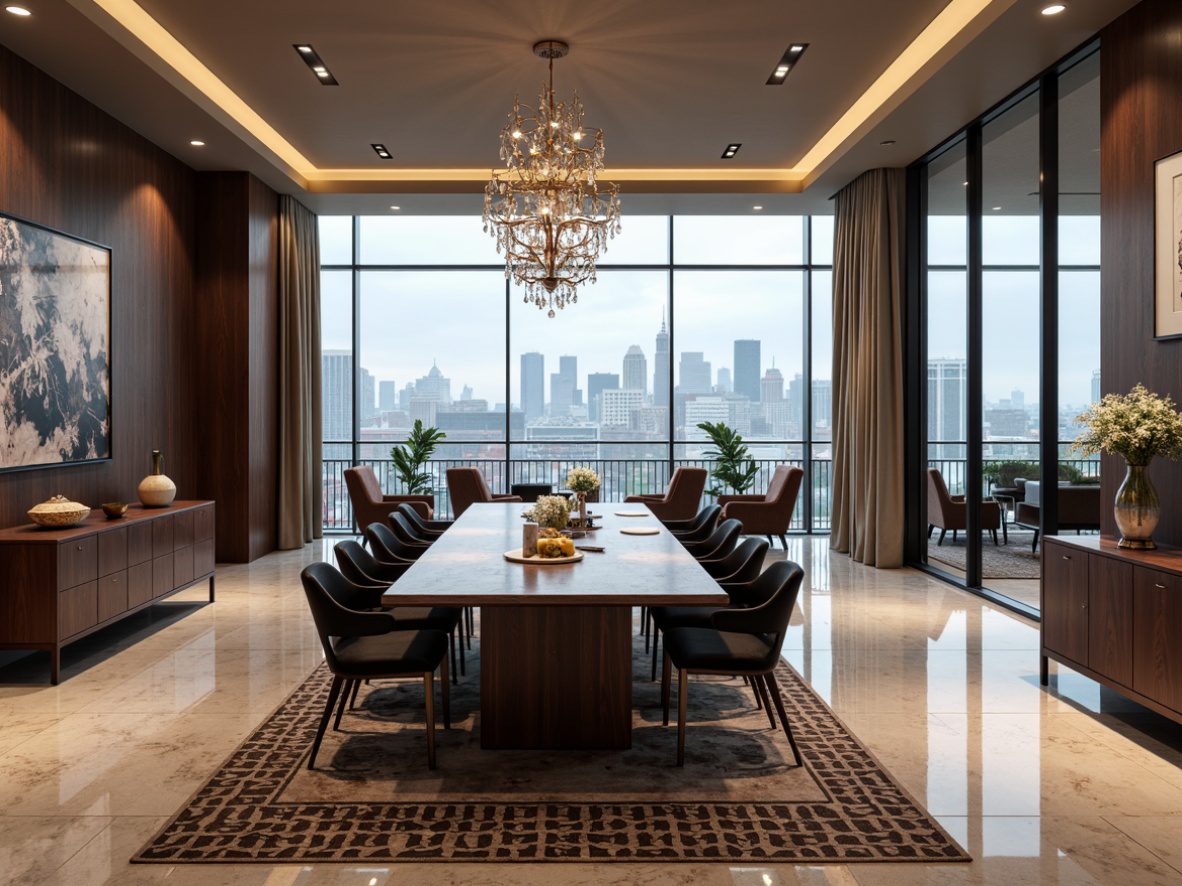
Farmhouse: Rustic Warmth and Everyday Comfort
Key Characteristics: Sturdy construction, distressed or reclaimed wood, simple silhouettes, and a welcoming, lived-in look.
Ideal Home Type: Fits beautifully in cozy family kitchens, countryside homes, or any interior aiming for a warm and homey feel.
Farmhouse tables encourage gathering and connection, making them perfect for large families or those who love casual entertaining.
Expert Tip:
If your home already has modern finishes, a rustic farmhouse table can create a striking yet balanced contrast.
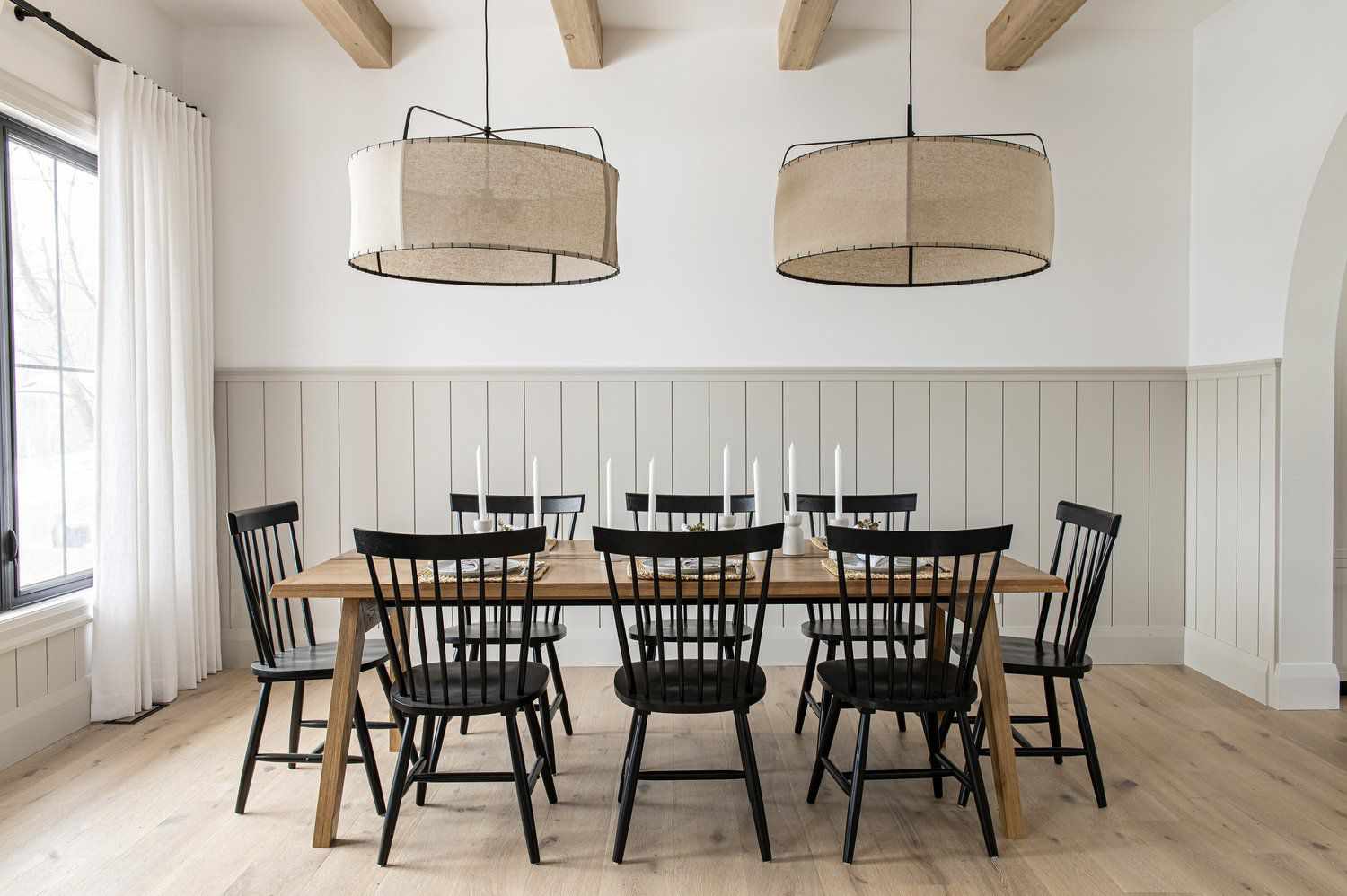
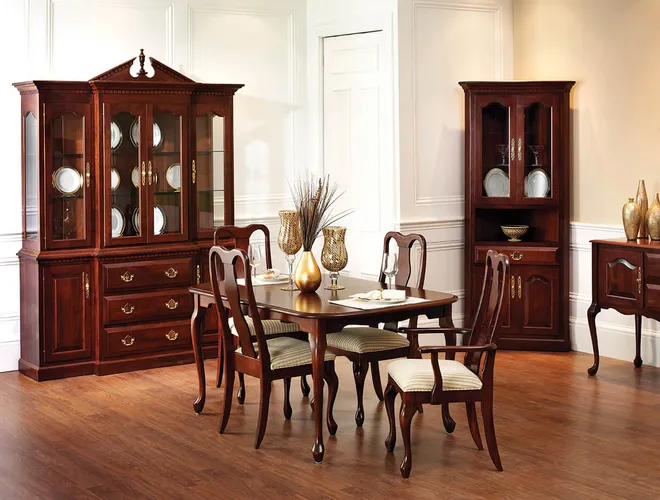
Traditional: Classic Elegance Style
Key Characteristics:
Ornate details, rich wood tones like mahogany or cherry, and timeless silhouettes, often with pedestal or carved legs.
Ideal Home Type:
Best suited for formal dining rooms or homes with classic architecture and decor.
A traditional table brings a sense of sophistication and history, ideal for those who enjoy elegant dining experiences or have heirloom furniture to match.
Scandinavian: Light, Functional, and Airy
Key Characteristics:
Clean, organic shapes, light wood tones, and a focus on function over ornament. Scandinavian tables often feature tapered legs and natural finishes that highlight the wood’s grain.
Ideal Home Type:
Perfect for minimalist homes, bright apartments, or airy, open spaces with lots of natural light.
The Scandinavian style promotes mindful living; it encourages simplicity, connection, and intentional use of space.
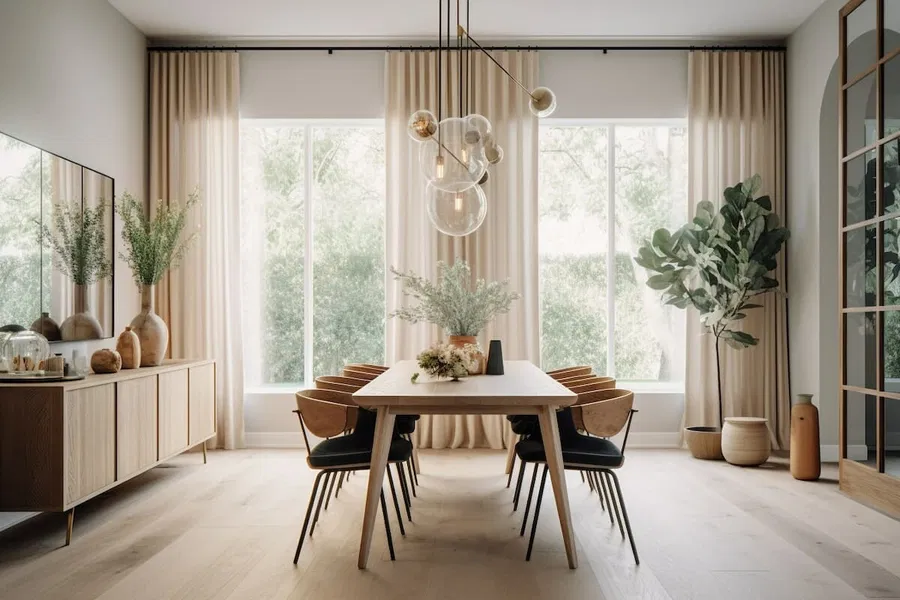
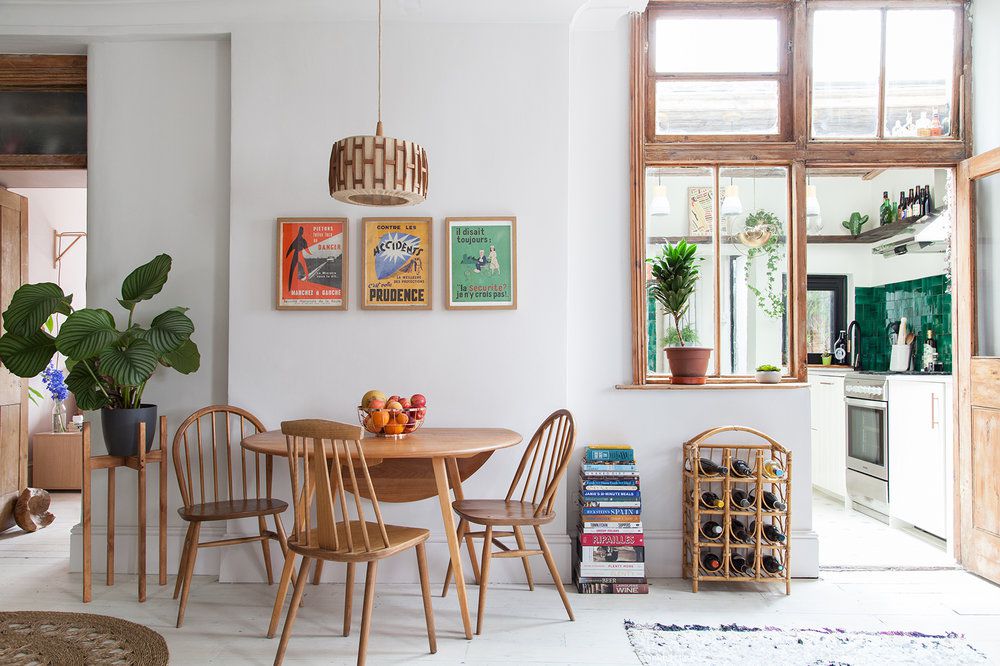
Mid-Century Modern: Retro with a Contemporary Twist
Key Characteristics:
Sleek, organic shapes; mixed materials like wood, glass, and metal; and distinctive tapered or angled legs.
Ideal Home Type: Great for retro-inspired homes, creative spaces, or eclectic interiors that mix old and new.
This style adds personality and charm without feeling outdated. A mid-century table can act as a focal point that bridges eras in your decor.
Bohemian: Eclectic and Soulful
Key Characteristics: Handcrafted details, natural materials, global influences, and often a mix of colors, textures, and patterns.
Ideal Home Type: Suits relaxed, artistic environments or homes that celebrate individuality and travel-inspired decor.
Bohemian dining tables embody warmth and creativity, making every meal feel personal and expressive.
Style Guide: Quick Comparison
|
Style |
Key Characteristics |
Ideal Home Type |
|
Modern |
Clean lines, minimalist, sleek materials |
Contemporary apartments, open-concept homes |
|
Farmhouse |
Rustic wood, sturdy, distressed finishes |
Countryside homes, cozy kitchens |
|
Traditional |
Ornate carvings, rich dark wood, classic shapes |
Formal dining rooms, classic decor |
|
Industrial |
Metal accents, reclaimed wood, exposed hardware |
Lofts, urban living, masculine interiors |
|
Scandinavian |
Light wood, simple forms, airy and functional |
Minimalist, bright, open spaces |
|
Mid-Century Modern |
Organic lines, tapered legs, mixed materials |
Retro-inspired, artistic homes |
|
Bohemian |
Eclectic, handcrafted, globally inspired |
Relaxed, creative, free-spirited spaces |
Niche Recommendations
- Best Tables for Open-Concept Living: Opt for modern, Scandinavian, or mid-century tables with clean lines and lighter finishes; they blend seamlessly without visually weighing down shared spaces.
- Dining Tables for Multi-Functional Spaces: Choose extendable tables in engineered wood or metal bases; they adapt easily for work, crafts, or entertaining.
- Mindful Dining Choices: If sustainability matters, consider reclaimed wood or FSC-certified hardwoods, eco-friendly options that combine longevity with conscious design.
Expert Tip: To avoid visual clutter, coordinate your table style with your existing furniture. Matching everything perfectly isn’t necessary; instead, aim for balance. A rustic table in a modern room or a sleek table in a traditional home can add character when styled thoughtfully.
Seating Capacity Guide: How Many Can You Comfortably Fit?
The right dining table doesn’t just fit your room, it fits your people. Planning enough space for everyone to dine comfortably is key to creating an inviting, enjoyable experience. Whether you host large family dinners or casual get-togethers, understanding seating capacity and spacing standards helps you find the right table size from the start.
General Guidelines for Seating Space
When planning your layout, think in terms of comfort rather than maximum capacity. Cramming in extra seats may seem practical, but it often leaves guests feeling squeezed and awkward. Here are a few reliable measurements used by interior designers and ergonomics experts:
- Per Person: Allow about 24–30 inches (60–75 cm) of table edge space per diner. This gives each person enough room to eat and move comfortably without bumping elbows.
- Clearance Around the Table: Maintain 36–48 inches (90–120 cm) of open space around the table. This ensures chairs can be pulled out easily and allows people to move freely without disrupting others.
Expert Tip: If your dining area is tight, use benches or armless chairs along one side of the table to save space while keeping movement comfortable.
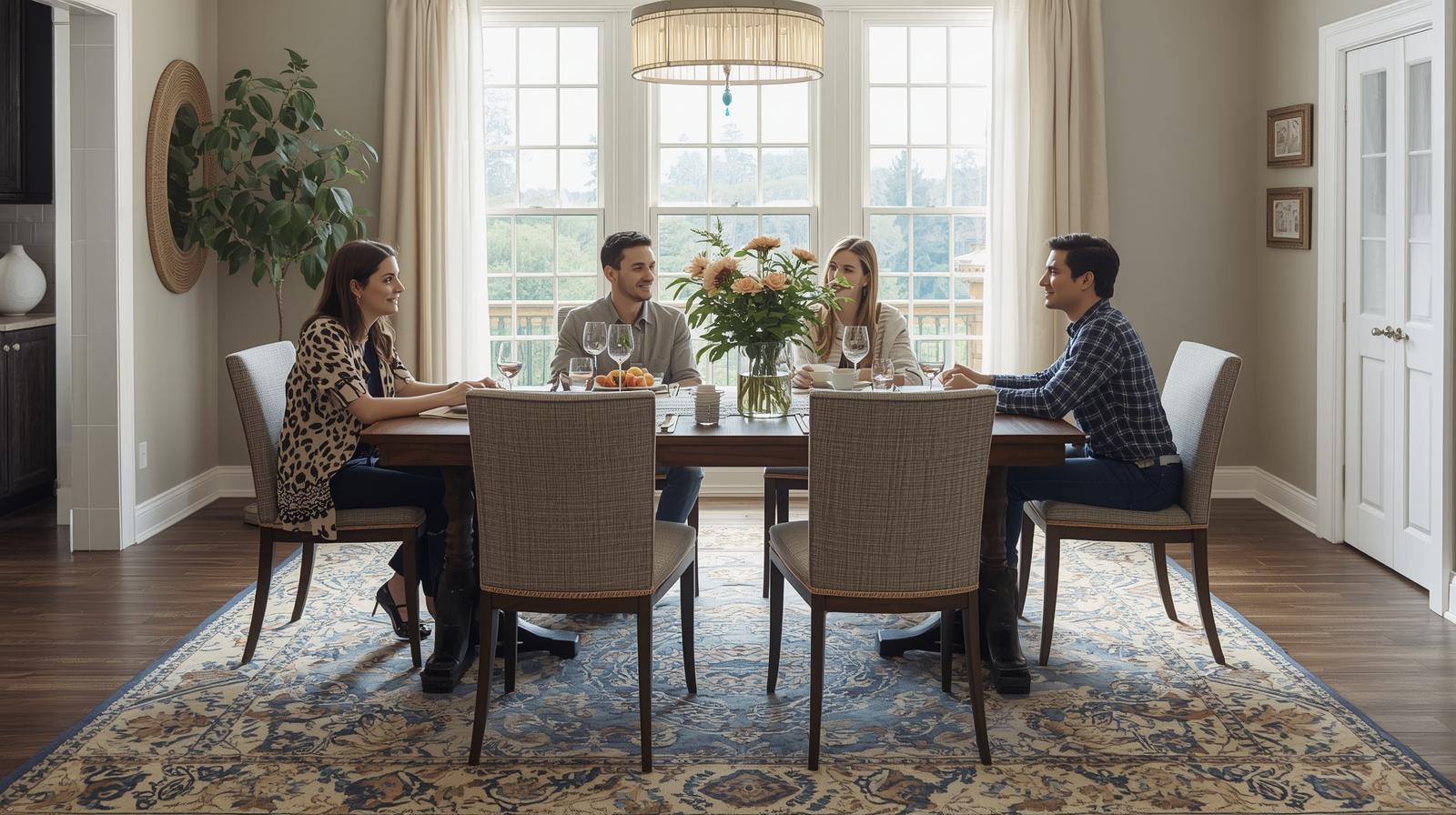
Seating Capacity by Table Length and Diameter
The following chart provides general guidelines for how many people each table size can seat comfortably. Actual capacity may vary depending on the size and style of chairs, the shape of the table legs, and whether you add seating at the ends of rectangular tables (which typically increases capacity by two).
|
Table Length/Diameter |
Rectangular/Oval Seating |
Round/Square Seating |
|
36 inches (90 cm) |
N/A |
2–4 |
|
42 inches (107 cm) |
N/A |
4 |
|
48 inches (122 cm) |
4 |
4–6 |
|
60 inches (152 cm) |
6 |
6 |
|
72 inches (183 cm) |
6–8 |
N/A |
|
84 inches (213 cm) |
8–10 |
N/A |
|
96 inches (244 cm) |
10–12 |
N/A |
These numbers assume average chair widths (18–20 inches) and standard leg placement. Tables with pedestal or trestle bases often allow for slightly more flexible seating than those with thick corner legs.
Understanding Comfort vs. Capacity
It’s tempting to choose a table that “can seat ten,” but keep in mind that capacity ratings are often based on tight spacing. For everyday use, opt for the comfortable capacity, usually the lower end of the range. For special occasions, you can add extra chairs if your room allows.
For example:
- A 72-inch table seats 6 comfortably and up to 8 for a festive dinner.
- A 96-inch table fits 10 for daily meals or 12 for larger gatherings.
E-E-A-T Note: These measurements follow widely accepted ergonomic and design standards from the Architectural Graphic Standards and the Human Factors Design Handbook, both of which emphasize 24–30 inches of space per person as ideal for comfortable dining.
Planning for Real-Life Use
- Everyday Dining: Choose a table that comfortably fits your usual household, plus one or two extra seats.
- Frequent Entertaining: Go for an extendable design, leaf inserts let you expand the table when needed.
- Small Spaces: Consider round tables, which naturally promote conversation and fit more people into compact dining areas.
Expert Tip: Comfort matters more than headcount. Guests remember how they felt at your table,n ot just that they had a seat.
Extendable Dining Tables: Maximize Flexibility & Space
If your dining room needs to multitask, serving as both a cozy family space and a spot for entertaining, an extendable dining table is the perfect solution. These tables combine practicality with versatility, giving you the freedom to adjust your setup based on the occasion.
Benefits of Extendable Tables
Extendable dining tables are designed to fit seamlessly into modern lifestyles where space is often limited but flexibility is essential.
- Space-Saving: Keep your table compact for everyday meals and extend it only when needed. Perfect for apartments, condos, or smaller dining areas.
- Versatility: Easily switch from a four-person weekday setup to a larger arrangement for guests or celebrations.
- Cost-Effective: One table meets multiple needs, saving you from investing in additional furniture.
- Solves Common Pain Points: If you struggle to host larger gatherings without crowding your space, this type of table gives you the best of both worlds: efficiency and hospitality.
Expert Tip: If you entertain occasionally but need to keep your space open day to day, an extendable table provides the ideal balance between functionality and space efficiency.
Types of Extension Mechanisms
Extendable tables come with various mechanisms, each designed for different space needs and ease of use. Understanding how they work helps you choose the right one for your lifestyle.
- Butterfly Leaf
The butterfly leaf is one of the most popular options. A central panel (the “leaf”) folds and stores within the table itself. To extend, simply pull the table apart and unfold the hidden leaf into place.
- Best For: Those who want a clean look and easy setup without storing extra parts.
- Consideration: The mechanism can be slightly heavier and more complex, but it is highly durable when well-built.
- Drop-Leaf
Drop-leaf tables have hinged sections on either side that fold down when not in use. To expand, just lift the leaves and secure them with supports underneath.
- Best For: Small apartments or breakfast nooks where space flexibility is key.
- Consideration: These tables can feel a bit less stable when fully extended and usually offer smaller expansions.
- Pull-Out (or Drawer) Leaf
This mechanism includes extra panels stored beneath the tabletop. To extend, pull out hidden leaves from either end or the center.
- Best For: Quick transitions between small and large settings.
- Consideration: Requires a little more room to operate, and the hardware is sometimes visible when viewed from certain angles.
- Removable Leaf
In this traditional setup, additional leaves are stored separately and inserted when the table is opened up.
- Best For: Households with dedicated storage space and a need for a sturdy, stable table.
- Consideration: You’ll need to store the extra leaves safely to avoid damage or warping.
Extendable Table Mechanism Comparison
|
Mechanism Type |
Pros |
Cons |
Ease of Use |
|
Butterfly Leaf |
Self-storing, sleek, easy to operate |
Can be a heavier, more complex mechanism |
High |
|
Drop-Leaf |
Extremely space-saving, perfect for small rooms |
Slightly less stable, limited expansion |
High |
|
Pull-Out/Drawer Leaf |
Smooth operation, self-storing |
Requires more space to extend, visible hardware |
Medium |
|
Removable Leaf |
Sturdy when extended, simple design |
Separate storage required |
Medium |
Choosing the Right Extendable Table for Your Home
When selecting an extendable dining table, consider how often you entertain, how much storage space you have, and the shape of your dining area.
- Small Apartments: A drop-leaf table can double as a console when folded down.
- Busy Families: A butterfly leaf design is durable and easy to extend on the fly.
- Frequent Entertainers: A removable leaf table allows the most flexibility for large gatherings.
- Modern Spaces: Pull-out mechanisms offer a sleek, minimalist look with minimal setup effort.
Product Recommendation: Look for high-quality extendable tables made from hardwoods like oak or walnut, or durable materials such as tempered glass and metal. Brands like IKEA, West Elm, and Article offer reliable extendable models that balance quality, design, and function.
Chair Pairing & Comfort: Crafting the Perfect Dining Set
The right dining chairs can transform your dining experience from simply functional to truly inviting. Beyond looks, they determine how comfortable and cohesive your dining area feels. The goal is to strike the right balance between scale, style, and ergonomics, so every meal feels relaxed and enjoyable.
The Importance of Scale, Style & Ergonomics
- Scale:
Your chairs should suit both the size of your dining table and the dimensions of your room. Oversized chairs can make a smaller space feel cramped, while chairs that are too small can look out of place with a substantial table. Always measure carefully to ensure visual balance and practical comfort. - Style Harmony:
Matching isn’t mandatory. In fact, mixing styles, like pairing modern chairs with a rustic table, can create character and depth. The key is cohesion through shared elements such as color, material, or shape. For example, metal-framed chairs can balance a heavy wood table, while upholstered seats can soften an industrial or glass surface. - Ergonomics:
Comfort matters most. Look for chairs that support the natural curve of your back and provide adequate seat depth. Cushioned or contoured seats encourage longer, more comfortable dining sessions, while sturdy construction ensures durability over time.
Expert Tip: When pairing chairs with your table, make sure there’s a 10–12 inch gap between the top of the seat and the underside of the table. This allows enough legroom for comfort without making the setup feel cramped.
Chair-to-Table Height Compatibility
The right chair height ensures good posture and easy movement while dining. Use the table below as a quick reference:
|
Table Height (approx.) |
Ideal Chair Seat Height (approx.) |
|
Standard (29–30 inches / 74–76 cm) |
17–19 inches (43–48 cm) |
|
Counter Height (34–36 inches / 86–91 cm) |
24–26 inches (61–66 cm) |
|
Bar Height (40–42 inches / 102–107 cm) |
28–30 inches (71–76 cm) |
For standard dining setups, a 30-inch table paired with 18-inch chair seats is the sweet spot for most people. Counter and bar-height tables work best for casual or space-saving setups like kitchen islands or breakfast bars.
Choosing the Right Chair Material & Design
- Upholstered Chairs: Great for comfort and formal settings. Choose performance fabrics or treated materials for easier cleaning.
- Wood Chairs: Durable, timeless, and available in a wide range of finishes. Add cushions for added comfort.
- Metal Chairs: Sleek and sturdy, ideal for modern or industrial spaces. Look for padded seats for extra comfort.
- Plastic or Acrylic Chairs: Lightweight and space-saving, perfect for contemporary or small dining areas.
- Mixed-Material Designs: Combine metal frames with wooden or fabric seats for a balanced aesthetic that’s both stylish and durable.
Expert Tip: Always test the chair if possible. Sit back, cross your legs, and lean slightly forward; your knees shouldn’t hit the table, and your arms should rest comfortably at table height.
Bringing It All Together
When it comes to dining chairs, comfort and proportion are non-negotiable. Whether you’re going for a uniform look or a more curated mix-and-match style, keep scale, ergonomics, and legroom in mind. The best dining sets are those that invite people to linger long after the meal is over.
Budgeting for Your Dining Table: Value vs. Splurge
Buying a dining table is more than a purchase; it’s an investment in your home and lifestyle. Setting a realistic budget helps you balance quality, style, and functionality, ensuring your table will serve you well for years. Understanding what drives cost allows you to decide when it’s worth splurging and where you can save without compromising your dining experience.
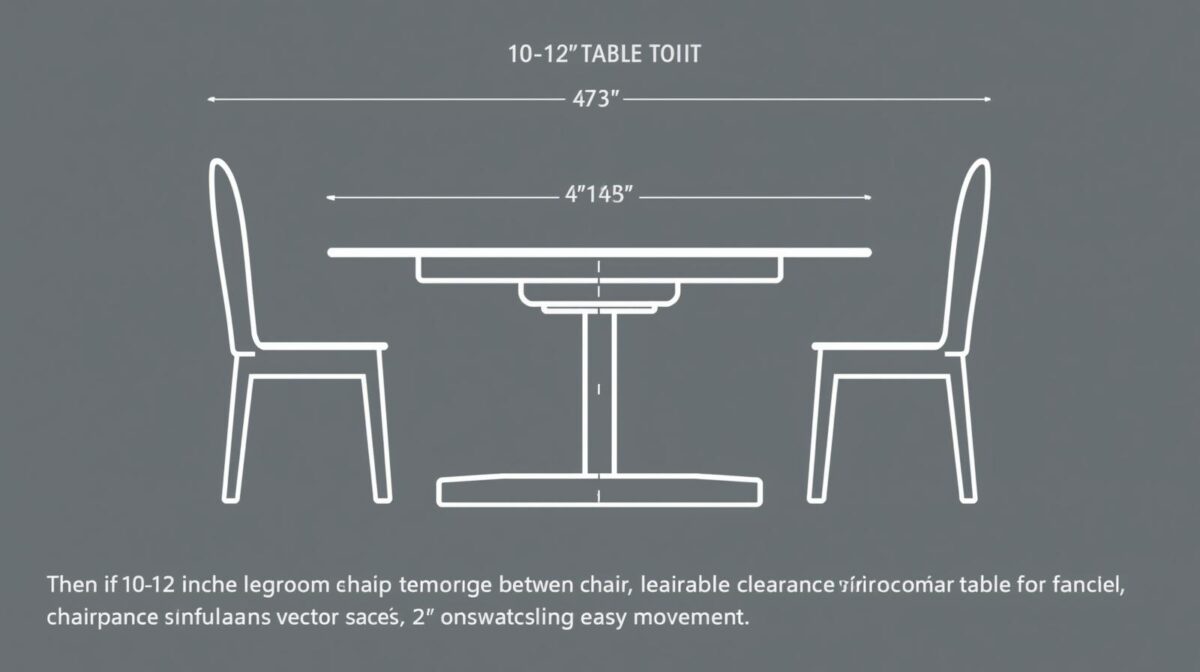
Setting a Realistic Budget
Start by defining your priorities. Ask yourself:
- What are your non-negotiables? Do you need a durable hardwood table, a certain size to fit your family, or an extendable design for entertaining?
- Long-term investment: A dining table is rarely replaced every few years. Consider its potential lifespan, refinishing possibilities, and durability.
- Pain Points: Many buyers struggle to balance budget constraints with the desire for quality and style. Focus on what matters most to your household; functionality often outweighs extra design flourishes.
Expert Tip: Don’t just look at the sticker price. A slightly higher upfront investment in quality materials or craftsmanship can save money in the long run by reducing repairs, replacements, or refinishing costs.
Factors Influencing Dining Table Cost
Several elements determine how much a table will cost. Understanding these factors helps you make an informed decision:
|
Cost Factor |
Impact on Price |
Considerations & Examples |
|
Material |
High |
Solid hardwoods (oak, walnut, teak) and stone (marble, quartz) are more expensive than veneer, MDF, or laminate. Considering durability, maintenance, and aesthetics, solid wood can be refinished, while laminate is low-maintenance and budget-friendly. |
|
Size |
High |
Larger tables naturally cost more due to more materials and construction. Make sure the table fits your room dimensions and seating requirements. |
|
Craftsmanship |
Moderate to High |
Hand-finished tables with detailed joinery, carved legs, or bespoke designs are pricier than mass-produced models. Look for smooth finishes, tight joints, and durable construction. |
|
Brand/Designer |
Moderate to High |
Designer or high-end brands often command a premium for reputation, design uniqueness, and warranties. Consider whether brand value aligns with your budget and priorities. |
|
Features |
Moderate |
Extendable mechanisms, built-in storage, or specialty finishes add functionality but increase cost. Evaluate if these features match your lifestyle needs. |
|
Origin |
Moderate |
Imported tables may include shipping costs and import duties. Locally made tables can sometimes offer better value, faster delivery, and easier repair options. |
Balancing Value and Splurge
- Value spots: Materials like high-quality veneer, engineered wood, or laminate can offer aesthetic appeal at a lower cost, especially for everyday use. Mid-range mass-produced tables often provide solid craftsmanship for smaller budgets.
- Splurge-worthy items: Solid hardwood, stone, or hand-finished designs may carry a higher price tag but reward you with longevity, repairability, and timeless appeal.
Expert Tip: Consider the table’s lifespan and maintenance needs. Spending a bit more upfront on a durable, refinished-ready table is often cheaper over 10–15 years than buying a lower-quality piece you’ll replace sooner.
Practical Takeaway
A well-budgeted dining table balances price, quality, and functionality. By evaluating material, size, craftsmanship, and features, you can make a choice that meets both your aesthetic and practical needs. Remember, a table is not just furniture; it’s the center of meals, conversations, and memories. Investing wisely ensures your dining space remains inviting and functional for years to come.
Care & Maintenance Tips for Dining Table Longevity
Your dining table is more than furniture; it’s where memories are made, meals are shared, and your home comes alive. Proper care ensures it remains both beautiful and functional for years to come. Small daily habits can make a big difference in preserving your table’s appearance and durability.
General Care Practices for All Tables
No matter the material, a few universal practices will help your table last longer:
- Immediate Spill Cleanup: Wipe spills as soon as they occur to prevent stains, water damage, or warping.
- Protection: Use placemats, coasters, and tablecloths to shield surfaces from heat, moisture, and scratches.
- Avoid Direct Sunlight: Prolonged exposure can fade finishes or warp materials, especially wood and laminate.
- Regular Dusting: Dust prevents particle buildup that can scratch delicate surfaces over time.
Expert Tip: Even if your table is high-quality, regular maintenance is essential. Consider rotating decorative items to avoid uneven fading or wear patterns.
Material-Specific Maintenance Guide
Different materials require tailored care to maintain their appearance and longevity.
|
Material |
Daily Care |
Deep Cleaning |
What to Avoid |
|
Solid Wood |
Dust with a soft cloth; wipe spills immediately |
Wood cleaner or polish as needed; re-oil or wax annually |
Harsh chemicals, excessive moisture, and placing hot items directly on the surface |
|
Veneer/Engineered Wood |
Wipe with a damp cloth |
Mild soap and water, dry immediately |
Abrasive cleaners, saturated with water |
|
Glass (Tempered) |
Use glass cleaner and a microfiber cloth |
Vinegar solution for streak-free shine |
Abrasive pads, harsh chemicals on the frame |
|
Metal |
Wipe with a damp cloth; dry immediately |
Mild soap and water; inspect for rust |
Abrasive cleaners, prolonged moisture exposure |
|
Stone (Marble, Granite, Quartz) |
Wipe with a damp cloth; dry immediately |
pH-neutral stone cleaner; reseal as recommended (usually 6–12 months for marble) |
Acidic cleaners (vinegar, lemon), abrasive pads, and oil-based stains |
|
Laminate |
Wipe with a damp cloth |
Mild household cleaner; dry immediately |
Abrasive cleaners, excessive water |
Expert Tip: Always check manufacturer guidelines, particularly for specialized finishes or exotic woods. For stone tables, resealing prevents stains and helps maintain the polished look.
Protecting Your Investment
- Use coasters for beverages to prevent water rings.
- Place hot pads under dishes from the oven or stovetop.
- Avoid dragging items across the surface, which can scratch delicate finishes.
- Consider tablecloths or runners during high-traffic or event meals for added protection.
Our Top Dining Table Picks
After extensive research and careful evaluation, we’ve selected the top dining tables across a variety of categories, budgets, and styles. Each table was chosen for its combination of durability, design, functionality, and value, helping you make an informed decision for your home.
How We Evaluated Our Top Picks
Our recommendations are based on a structured assessment designed to give you confidence in your choice:
- Material Quality & Craftsmanship: We considered the durability and quality of materials, joinery, and finish.
- Stability & Durability: Each table was evaluated for daily use, resistance to wear, and long-term robustness.
- User Reviews & Ratings: Real-world feedback was analyzed to confirm reliability, ease of use, and satisfaction.
- Assembly Difficulty: Tables that are easier to assemble with clear instructions scored higher.
- Value for Money: We balanced cost with quality, functionality, and longevity.
- Aesthetic Appeal & Versatility: Tables were assessed for how well they integrate into various home styles.
Expert Tip: Look for tables with high user satisfaction, quality construction, and materials that match your lifestyle, whether that’s hosting large gatherings or managing a busy household.
Top Table Picks by Category
|
Category |
Recommended Table Type/Material |
Key Features |
Why We Like It |
|
Best for Small Spaces |
Drop-Leaf or Console-to-Dining Table |
Compact footprint, convertible design, sturdy |
Maximizes space without sacrificing style or function; perfect for apartments or small dining nooks |
|
Best Extendable |
Solid Wood with Butterfly Leaf |
Integrated leaf, smooth extension mechanism, durable |
Seamless transition for entertaining, timeless aesthetic, suitable for both everyday use and larger gatherings |
|
Best Budget |
High-Quality Laminate or Engineered Wood |
Durable, easy to clean, stylish designs, affordable |
Practical choice for busy families or high-traffic homes, excellent value without compromising on appearance |
|
Best Luxury |
Solid Walnut or Marble Top with Metal Base |
Premium materials, exquisite craftsmanship, and unique design |
Statement piece that elevates the dining room; exceptional durability and visual impact |
|
Best for Durability |
Solid Oak with Protective Finish |
Scratch and dent resistant, can be refinished, robust |
Built to last generations, ideal for households with children or frequent entertaining |
|
Best for Modern Homes |
Tempered Glass Top with Sleek Metal Base |
Clean lines, airy feel, contemporary |
Enhances modern aesthetic, makes spaces feel larger and lighter, easy to coordinate with minimalist interiors. |
Additional Recommendations
- Small Apartment Solutions: Look for folding or drop-leaf tables that can double as side tables or desks.
- Family-Friendly Choices: Laminate or solid wood with protective finishes balances durability with style.
- Statement Pieces: For a luxury dining experience, marble tops with metal bases combine elegance with long-term value.
Modern and Open-Concept Spaces: Glass or acrylic tables maintain an open, airy feel while complementing clean, contemporary décor.
Where to Buy Your Perfect Dining Table
Finding the right table is only part of the journey; knowing where to buy it can make all the difference. Shopping wisely helps you balance price, selection, and confidence in your choice.
Online vs. In-Store Shopping: A Comparative Look
|
Shopping Method |
Pros |
Cons |
Best For |
|
Online |
Wide selection, competitive pricing, and convenient delivery |
Cannot see or touch the product before purchase, potential delivery/assembly issues |
Buyers with a clear idea of needs, budget-conscious shoppers, and those living remotely |
|
In-Store |
See and touch products, expert advice, and immediate purchase |
Limited selection, often higher prices, and less convenient |
Unsure about finish or feel, prefer hands-on evaluation, want local support |
Expert Tip: If possible, combine both approaches: browse online to compare styles and prices, then visit a showroom to test comfort and quality before committing.
Reputable Retailers & Brands
Depending on your preference for online convenience or in-store experience, there are several trustworthy options:
- Online Retailers: Wayfair, Overstock, Article, West Elm – wide variety, competitive prices, and convenient delivery.
- Brick-and-Mortar Stores: Crate & Barrel, Pottery Barn, IKEA, and local furniture stores – allow you to touch, feel, and test tables in person.
- Specialty Stores: Focused on specific aesthetics or materials, like mid-century modern, farmhouse, or custom designs.
Expert Tip: Check return policies, shipping fees, and assembly requirements before committing, especially for online purchases.
Beyond the Showroom: Hidden Gems & Customization
- Local Artisans & Custom Furniture: For a truly unique piece, consider commissioning a table. Customization allows precise sizing, material choice, and design tailored to your space.
- Vintage & Second-Hand Markets: Estate sales, antique shops, and online marketplaces can reveal one-of-a-kind tables with character and history.
- Customization Benefits: Perfect fit for unusual spaces, distinctive style, and long-term investment in craftsmanship.
Find Your Perfect Table
Take our interactive style quiz to discover the ideal table for your space, lifestyle, and aesthetic preferences. Visualize it in your room before you buy!
Let's Find Your Perfect Table Match
Answer a few simple questions about your space and lifestyle to get personalized table recommendations
Style Assessment
Discover tables that match your aesthetic preferences and interior design style
Space Optimization
Find the perfect size and shape for your room dimensions and layout
AR Visualization
See how your recommended table will look in your actual space before buying
Expert Tip
Using visualization tools or style quizzes can reduce uncertainty and increase confidence in your choice. Whether shopping online or in-store, these tools help ensure your new table will fit both your space and your style.
What's Your Design Style?
Choose the aesthetic that best represents your personal taste
How Will You Use Your Table?
Select the option that best describes your primary needs
What Are Your Space Constraints?
Help us understand your room size and layout requirements
Tell Us About Your Household
This helps us recommend tables that fit your lifestyle
What's Your Budget Range?
Select the price range you're comfortable with
Your Perfect Table Match
Based on your answers, here are our personalized recommendations
Modern Minimalist Table
Sleek design with clean lines and functional elegance
Why It's Your Match:
Your preference for clean aesthetics and functional design makes a modern minimalist table the perfect choice. These tables feature sleek lines, uncluttered surfaces, and often incorporate mixed materials like glass, metal, and light woods.
Key Features:
Look for tables with geometric shapes, slim profiles, and versatile color options that can adapt to changing decor. Many modern designs also offer smart storage solutions and extension capabilities.
Best Materials:
Tempered glass, powder-coated metal, engineered wood with matte finishes, and composite materials that offer durability without visual weight.
Rustic Farmhouse Table
Warm, natural materials with character and charm
Why It's Your Match:
Your preference for cozy, character-filled spaces makes a rustic farmhouse table ideal. These tables often feature solid wood construction, visible grain patterns, and distressed finishes that tell a story.
Key Features:
Look for tables with substantial bases, natural wood variations, and traditional joinery. Many rustic designs incorporate turned legs, breadboard ends, and other classic details.
Best Materials:
Reclaimed wood, solid oak or pine, natural finishes that enhance wood grain, and metal accents in black or oil-rubbed bronze.
Traditional Dining Table
Timeless elegance with refined details and craftsmanship
Why It's Your Match:
Your appreciation for classic design and timeless elegance makes a traditional table the perfect choice. These tables feature refined details, quality craftsmanship, and sophisticated proportions that never go out of style.
Key Features:
Look for tables with elegant leg designs (such as cabriole or turned legs), rich wood tones, and fine detailing. Many traditional tables offer extension options for entertaining.
Best Materials:
Solid mahogany, cherry, or walnut with polished finishes, intricate inlay work, and high-quality veneers that provide beauty and durability.
Visualize This Table In Your Space
Use our augmented reality tool to see how your recommended table will look in your actual dining area before you make a purchase.
AR Table Preview
Works on most smartphones and tablets. Point your camera at your dining area to place the virtual table.
Pro Tip: Try Before You Buy
Many furniture retailers now offer augmented reality tools that let you visualize how a table will look in your actual space. This technology helps solve the common problem of scale and proportion, ensuring your new table fits perfectly in your room before you make a purchase.
Share your results with friends or family to get their input!
Conclusion: Your Perfect Dining Table Awaits
Congratulations! You’ve navigated the exciting, but often overwhelming, world of dining tables. From understanding essential measurements and planning traffic flow, to evaluating materials, styles, and budgets, you now have the tools to make an informed, confident choice.
Remember, your dining table is more than just a piece of furniture. It’s the anchor of your dining experience, a place for meals, conversation, laughter, and lasting memories. By balancing aesthetics, functionality, and durability, and applying the practical tips and expert insights shared in this guide, you’re ready to select a table that complements your home and lifestyle perfectly.
Now, with clarity and confidence, it’s time to find the table that suits your space, expresses your style, and becomes the heart of your home. The perfect dining experience starts here.

